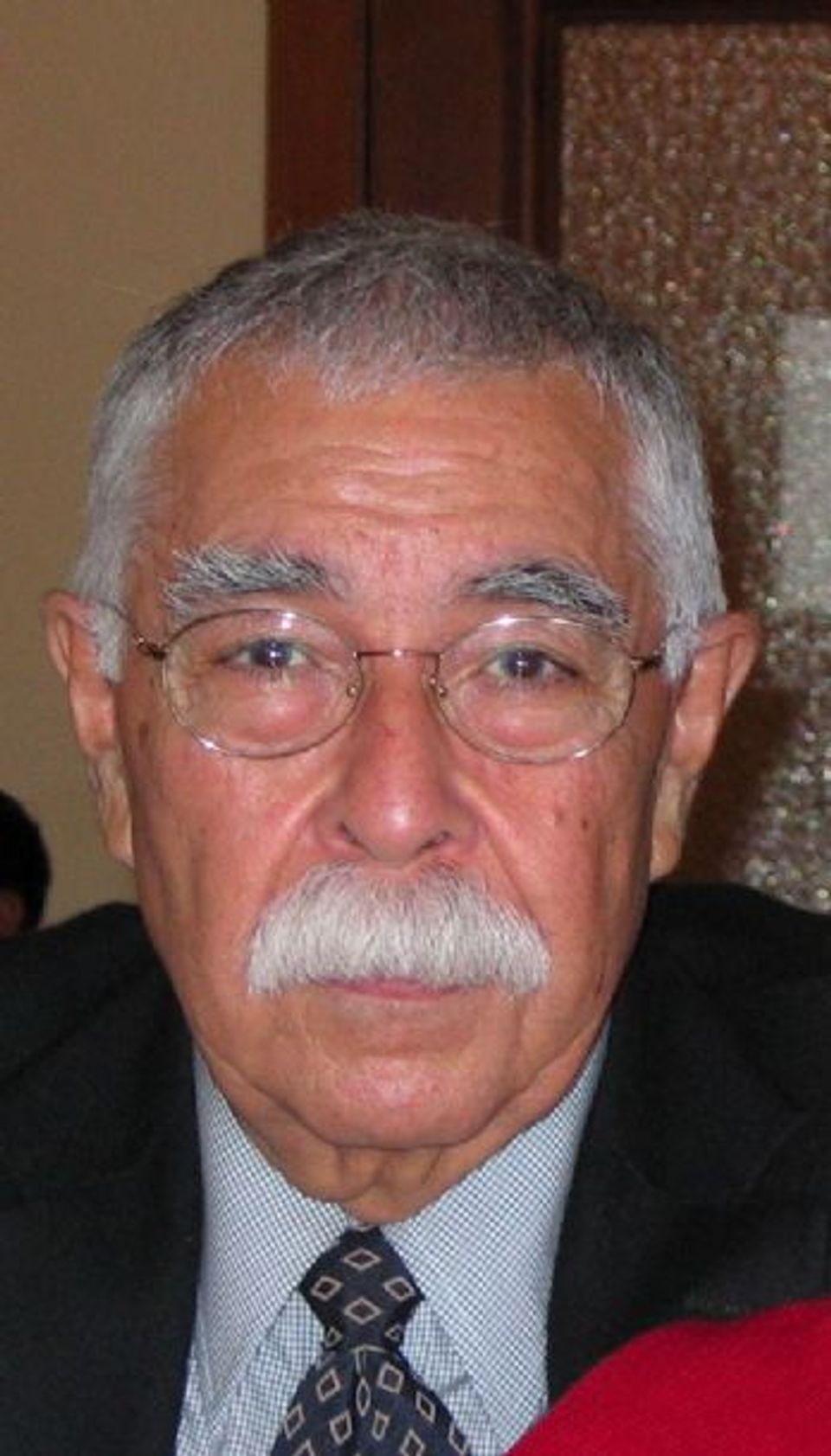Dominic Di Mare

- Also known as
- Dominic L. Di Mare
- Born
- San Francisco, California, United States
- Active in
- Tiburon, California, United States
- Biography
Dominic Di Mare grew up in Monterey, California, where his father owned and operated a commerical fishing boat. In the mid-1960s Di Mare, by then a San Francisco high school art teacher and self-taught studio weaver, was in the vanguard of the American fiber-art revolution. Fiercely three-dimensional and composed of a variety of yarns and natural fibers, his early sculptural hangings reveal the influence of tribal art forms.
In 1970 Di Mare began to hand-make rag papers. Reaching into the slurry to lift up a layer of pulp stirred deep-seated memories of fishing trips off the coasts of California and Mexico. The bulky sheets of paper appeared like "frozen waves." Inspired by these boyhood memories, Di Mare stopped weaving and began to fabricate enigmatic culptures from handmade papers, polished hawthorne twigs, and feathers.
In 1977 and 1981 Di Mare received National Endowment for the Arts fellowships and in 1987 was made a fellow of the American Craft Council.
Kenneth R. Trapp and Howard Risatti Skilled Work: American Craft in the Renwick Gallery (Washington, D.C.: National Museum of American Art with the Smithsonian Institution Press, 1998)
- Artist Biography
In the mid-1960s Dominic DiMare, a San Francisco Bay Area junior high school art instructor and self-taught, part-time studio weaver, was in the vanguard of American fiber art. Using a multiple harness loom, quadruple weaves (four panels woven together at a single point), and warp manipulation, he fashioned sculptural hangings from a variety of yarns, threads, and natural fibers—horsehair, uncarded wool, even grasses.
Off the loom, the weavings were often twisted, rolled, pleated, and further shaped by interweaving wires, or by tacking edges together. Unlike Lenore Tawney's more delicate and linear woven forms, DiMare's improvisational weavings from the 1960s are more substantial, and fiercely three-dimensional. Component forms include strips, medallions, shields, and manelike fringes, and his totemic designs, textured surfaces, and colors often revealed influences from primitive cultures.
Dominic DiMare grew up in Monterey, California, where his Sicilian-born father owned and operated a fishing boat. His youthful experiences as an ocean fisherman serve as his principal source of artistic inspiration. As a boy, he was enthralled by the sea, and fascinated by mariners' skills at knotting, splicing, binding, and braiding ropes, cords, and lines. At home, he routinely observed his father dexterously mend fishing lines and nets, and his mother crochet. Cruising a hundred miles or more off the coasts of California and Mexico in summer, he was deeply affected by the infinitude of ocean and sky, and mesmerized by the constant rhythm of ocean swells and the repeated movements of his fisherman father, The cruciform mast, knotted nets and lines, the drifting wake, and feathers and thread used to fashion fishing lures were to be keys to the formal construction and spiritual meanings of his later art.
In 1970 Dominic DiMare began handmaking rag papers. Often, the sheets incorporated flowers, plants, and feathers found on his Tiburon, California, property. Fie soon stopped weaving-even exhibiting—and instead concentrated on making increasingly metaphorical works from thick, handmade papers, and from found objects retrieved from the beach, yard, and roadside. The papermaking process-reaching into water to catch pulp, and creating bulky sheets that appeared like "frozen waves"—stirred deep-seated boyhood memories of ocean fishing, As a result, DiMare's intimate constructions of handmade papers and meticulously braided and knotted lines and threads are intensely, if elusively autobiographical. Process—repeatedly braiding and knotting, just as his father and Sicilian grandfather had done before him—is very much a part of the content and meaning of his work.
Manuscript #9 (1993.54.2) is from a series of twelve mixed-media constructions made in 1978 that employ a similar format. Each piece is composed of two or more layers of handmade paper suspended from a delicate frame of sanded hawthorns sticks. The foremost sheets contain a large, centralized cutout from which are hung alternating sheafs of smaller-sized paper and white, handmade felt. The name notwithstanding, there are no words to be found in the Manuscripts. Yet, each contains multiple levels of meaning, Instead of words, DiMare's sea-born mythology is expressed in miniature, netlike panels, tiny sparkling heads stitched in cross patterns, and trailing wakes of feathers and braided threads and raffia lines-along with faint embossings, and other impressions in the handmade paper.
DiMare prefers to work in series: "It forces you to explore and expand." Aside from the Manuscripts, there are Temples, Shrines, and Altars; the houselike Domus series; Rune and Letter Bundles; TidalWands/Guides; and the more recent, four-legged Mourning Stations. All are sacred structures—mysterious objects seemingly intended for unspecified rituals and ceremonies. Each symbolically expresses the artist's conviction that all individuals share traces of a common, ancient history, that combine—in varying degrees—the polarities of masculine animus and feminine anima, and have primitive needs for physical self-protection and spiritual survival.
Jeremy Adamson KPMG Peat Marwick Collection of American Craft: A Gift to the Renwick Gallery (Washington, D.C.: Renwick Gallery, National Museum of American Art, Smithsonian Institution, 1994)
Luce Artist BiographyDominic Di Mare is a native Californian who participated in the resurgence of weaving and fiber arts in the 1960s. His work as a weaver reminds Di Mare of his childhood, of watching his mother crochet and his father mend fishing nets. The artist has worked in ceramics and papermaking as well, and all of his art expresses a deep spirituality. Di Mare uses different materials to create sculptures that evoke reliquaries, pyramids, burial towers, and altars.













